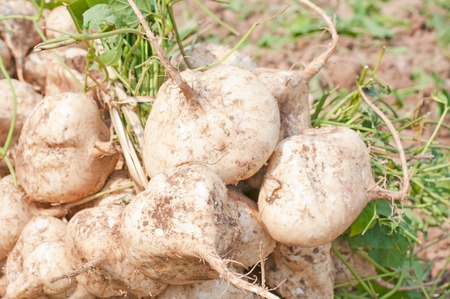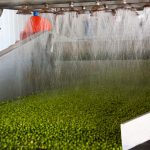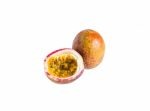
I doubt whether anyone has ever eaten Jicama let alone ever handled one. Rather like celeriac, it doesn’t yet set the world alight even though there is plenty of nutritional benefit in eating them. The vegetable is the root of the plant, the Pachyrhizus erosus. We also call it the Mexican yam Bean or the Mexican turnip. The Chinese name is bang kuang. The plant is a vine which also produces blue and white pods which are similar to lima beans.
Uses For Jicama
Firstly, it’s a tuber with a juicy, sweet habit, a nutty flavour reminiscent of a savoury pear. It is found in South American and Mexican market places, some parts of south Asia and of course speciality vegetable and fruit shops.
The root itself can grow up to two metres long, and can weigh up to 20 kg which seems ridiculous until you see them in the marketplace. They need between 6-9 months of frost free growth time. They are grown therefore in frost free regions like central Mexico but now south –east Asia.
Jicama has a thick and papery skin which needs to be peeled away. Like peeling an onion, always take a slice off the bottom so that it sits on the chopping board before going to work on it.
Jicama can be shredded and eaten raw like grated turnip and celeriac. It makes fantastic chips or crisps. We’ve seen it in bags of slightly fried cracker chips. Crudities, matchsticks for pancake rolls and stir-fries are all excellent vehicles for this vegetable’s crunchiness.
Nutritionally, the tuber is high in dietary fiber, vitamin C and contains trace amounts of fats and protein. Rather like Jerusalem Artichoke, it is high in inulin so makes a fine prebiotic.



Leave a Reply